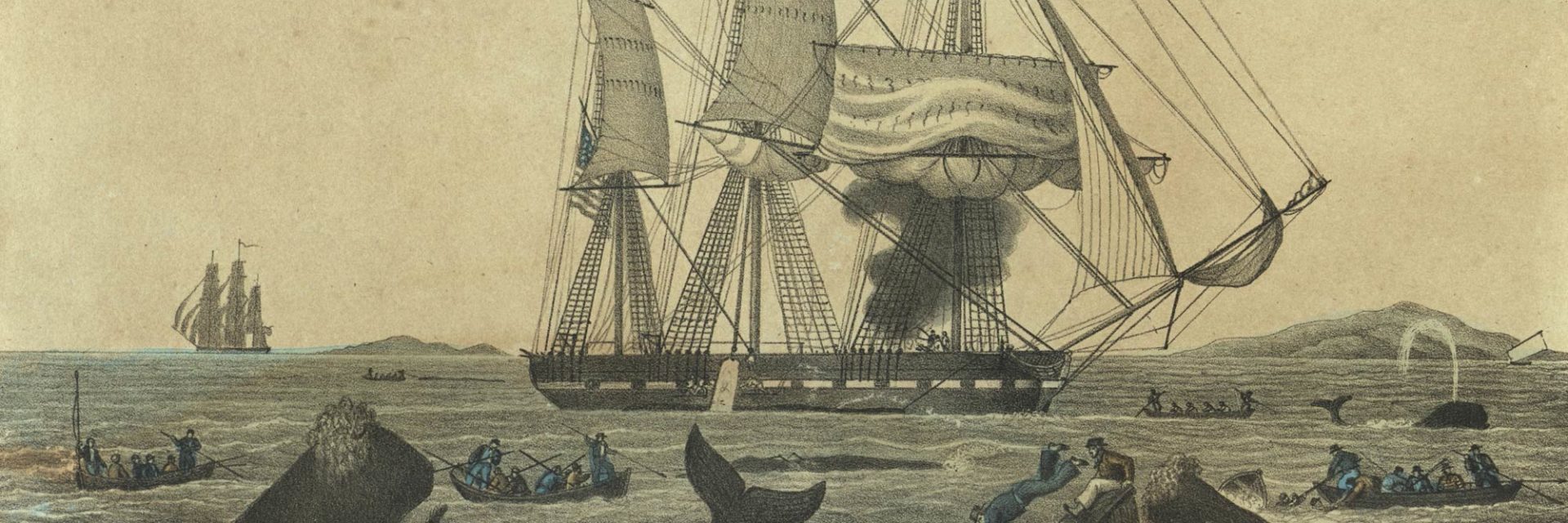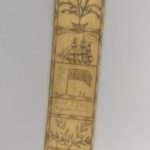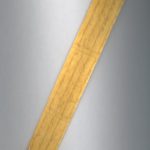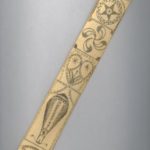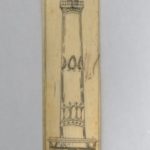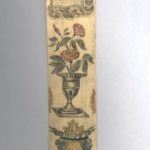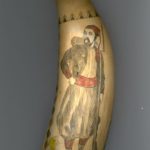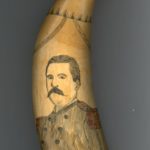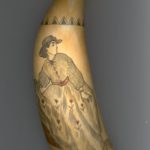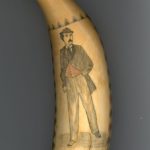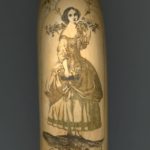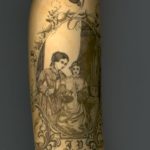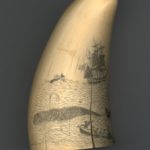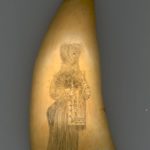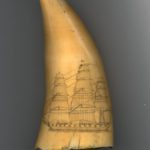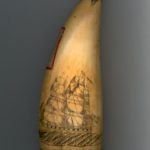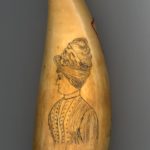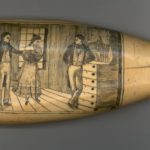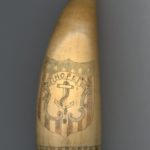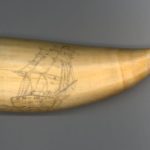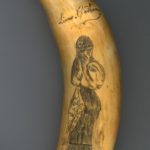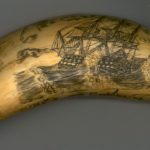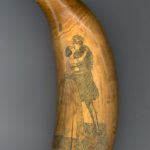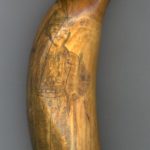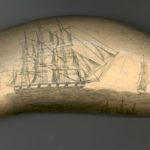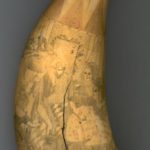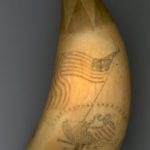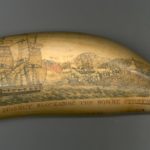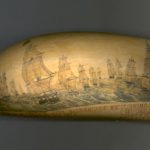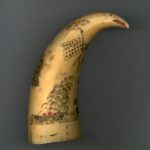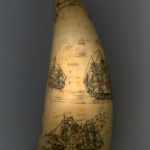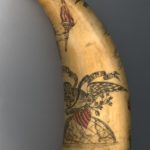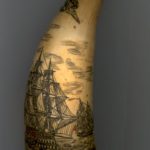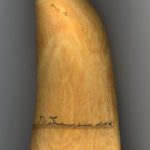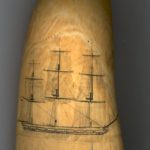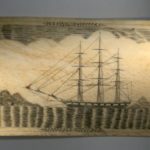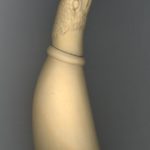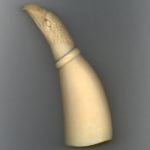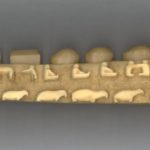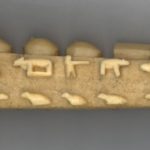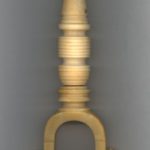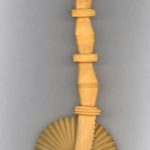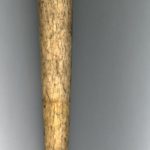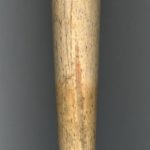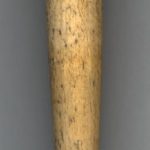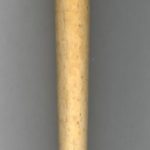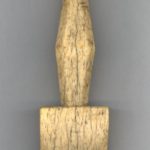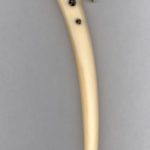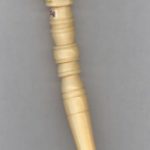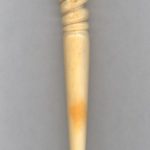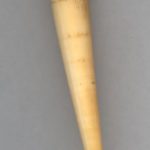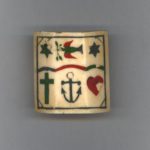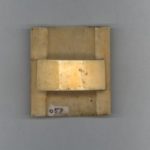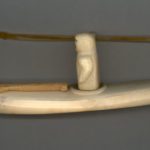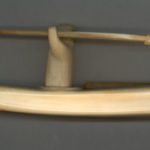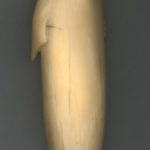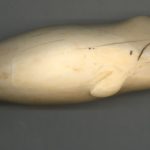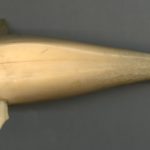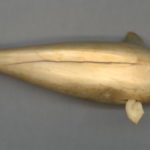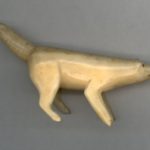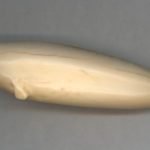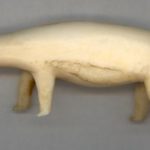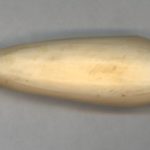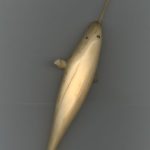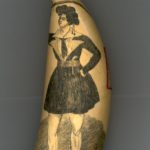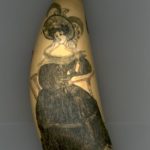The Nicholson Whaling Collection
Farewell old journal I love you well
Because of by gone days you tell
And I love you for other reasons too
One is because you always gave me something to do.
From the journal of the Columbus, 15 October 1852
The Nicholson Whaling Collection is one of the nation’s most important resources for whaling research. At the heart of the collection is the world’s second largest collection of whaling logbooks, recording more than 1,000 voyages. Within their pages, the logbooks hold records of whales captured and lost; accounts of shipwrecks, mutinies and other nautical misfortunes; poetry and paintings made by crewmembers in their spare time; and a wealth of data for researchers. The collection was donated to the Library in 1956 by Paul C. Nicholson, grandson of the founder of the Nicholson File Company, and it now includes more than 15,000 items, ranging from prints, photographs, scrimshaw and other artifacts to an extensive collection of manuscripts and account books. The earliest materials date from the 1700s and include a contract in which a Native American whaler agrees to be part of the crew of a 1723 whaling voyage. Hundreds of logbooks document the 19th-century high point of the whaling trade. This important collection continues to grow, thanks to an endowment provided by the Nicholson family.
Contact
Jordan Goffin
Director of Special Collections
Phone: 401-455-8021
Email: jgoffin@provlib.org
We welcome researchers, artists and the generally curious to visit and use the Nicholson Collection, and we’ve also made many of the logbooks available online. Links are available in the list of logbooks below.
Logbooks
More than 750 logbooks have been digitized, and we continue to add more. Many are available via the Internet Archive. Newly-digitized logbooks are being added to the library's digital repository. For more information about the logbooks, visit the collection's finding aid, where you can search and filter the collection.
Nicholson Collection Manuscripts
The Nicholson Whaling Manuscripts include crew lists, insurance documents, customs paperwork, correspondence and other documents relating to whaling voyages, including many voyages recorded by logbooks in the collection.
View the collection guide for more information, and visit ProvLibDigital to view the digitized images.
Nicholson Collection of Whaling Photographs
This collection includes photographic images that document the latter period of the New Bedford whaling industry. The collection includes glass plate negatives and photographic prints of various whaling ships as well as streets, wharves and other buildings in New Bedford, Massachusetts in the late 19th and early 20th centuries. Digitization funded by the National Historical Publications and Records Commission. Additional photographs are located in the Nicholson Collection and not yet described here. (Finding aid for the whaling photographs.)
Scrimshaw
Scrimshaw is a form of folk art practiced by whalemen in the 19th and early 20th centuries. Some scrimshaw was also produced by those on shore who had access to whale products. Makers of scrimshaw were called scrimshanders. They engraved images on ivory, whalebone, whale teeth, wood and shells, and carved items of bone and exotic woods. Typical works include decorated whale teeth and practical items such as napkin rings, canes, knitting needles, pie crimpers or jagging wheels (for cutting pastry), bodkins (for embroidery), swifts (yarn winders) and tools of all sorts for shipboard use.
Whaling voyages averaged nearly four years. To relieve the boredom of long periods of time between whale sightings, whalemen often played cards, checkers, and wrote in personal journals. Those with an artistic bent did woodcarving, sketching, knotwork, and made scrimshaw.
The taking of a whale provided scrimshanders with plenty of material. Sperm whales provided teeth; all whales provided bone; bowhead and right whales provided baleen, a black, flexible material found in the mouths of these whales. Walrus tusks were also decorated by whalers who ventured into Northern waters.
The quality of scrimshaw ranges from crude scratchings on teeth or bone to exquisite examples of fine craftsmanship with the majority falling somewhere in between. The Paul C. Nicholson Whaling Collection at Providence Public Library has a number of both artistic pieces of scrimshaw and more mundane but finely crafted functional pieces.
We extend our appreciation to Judith Navas Lund, whaling historian, who expertly cleaned, organized and cataloged the Library’s scrimshaw collection. Her valuable help on these and other areas of the collection is greatly appreciated.
